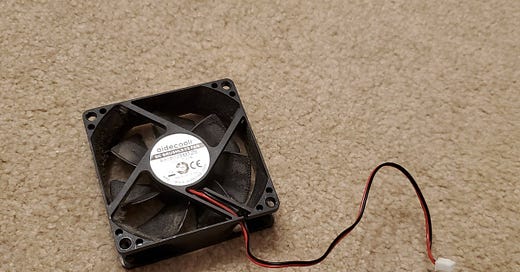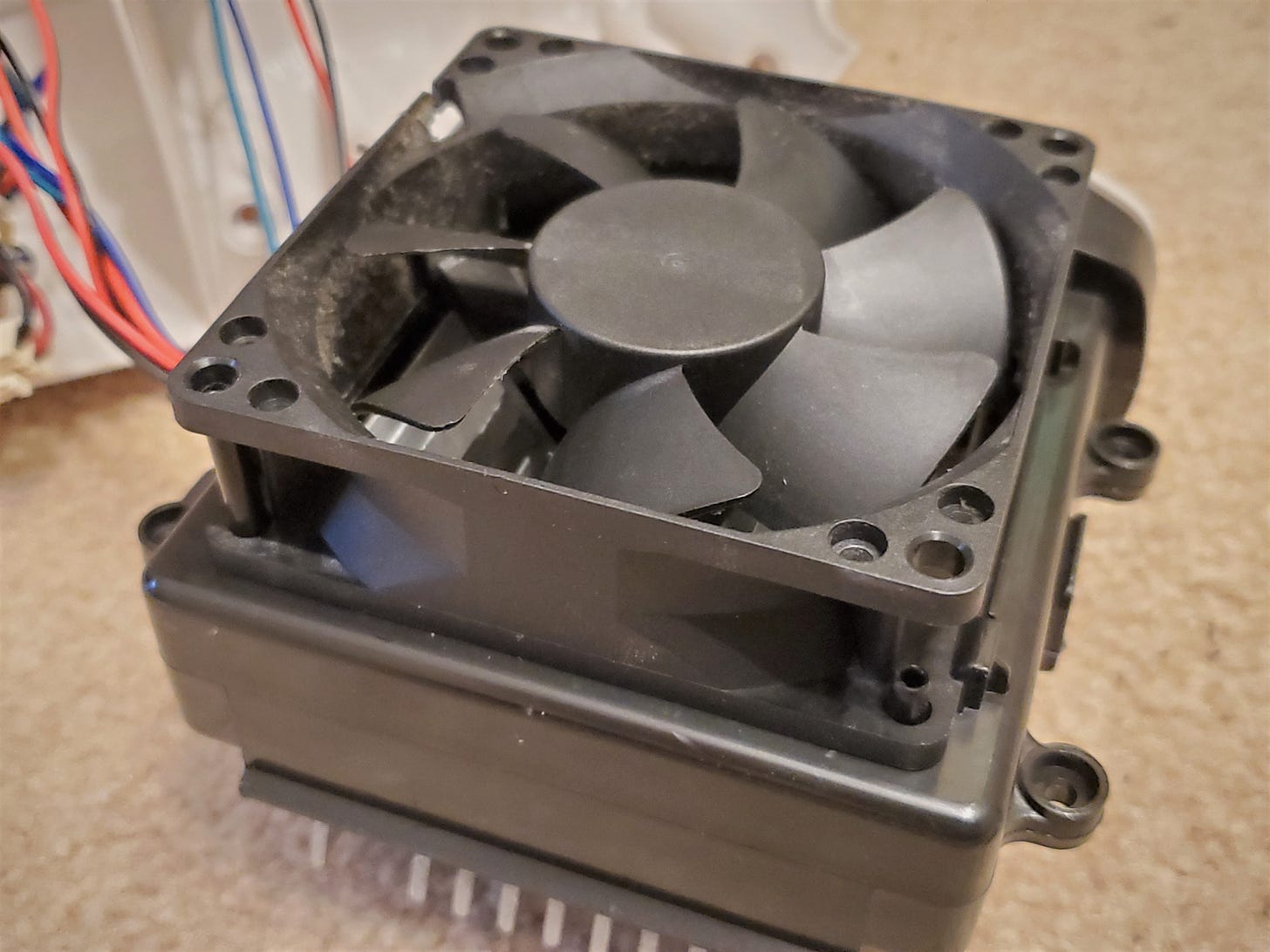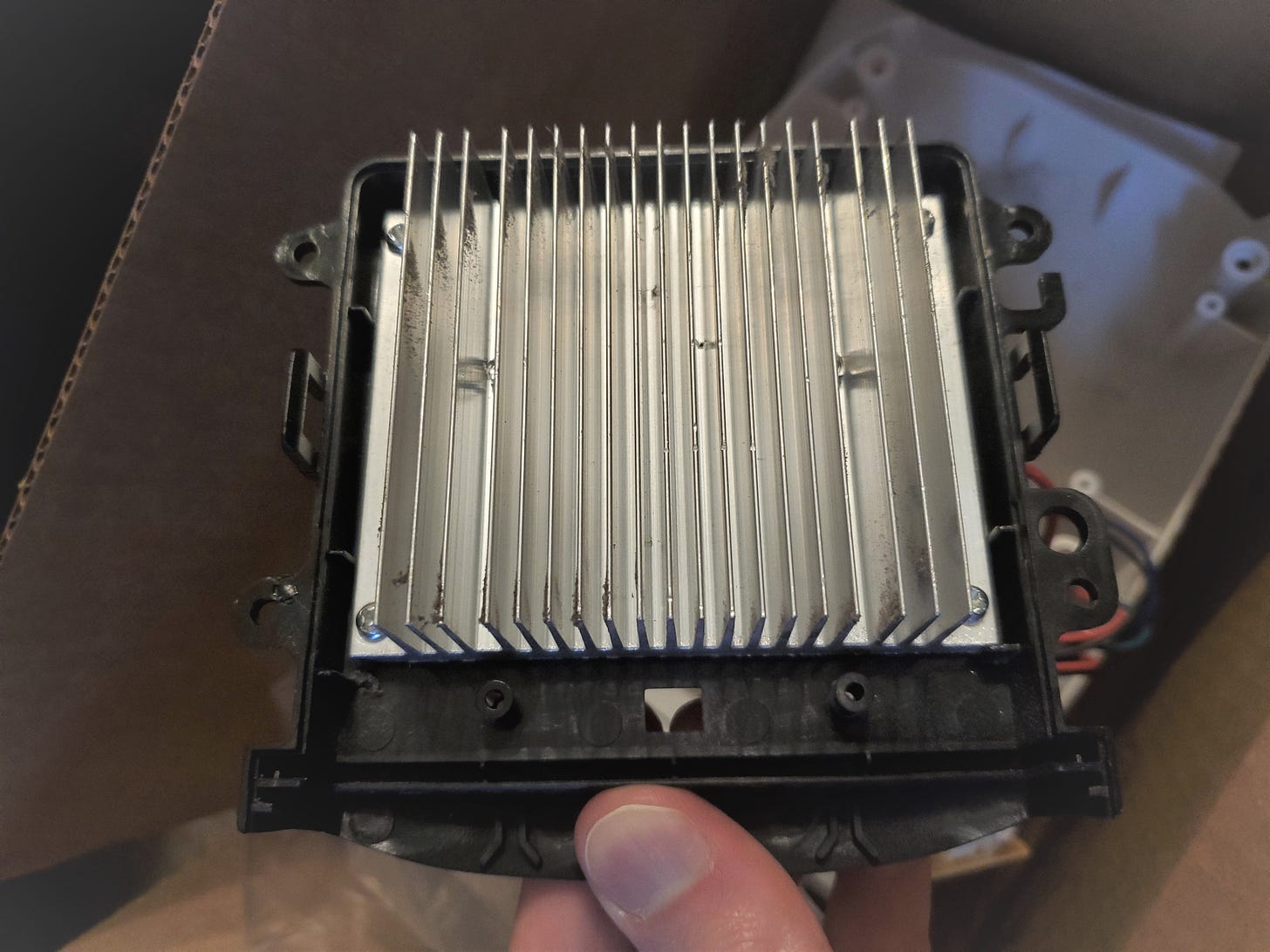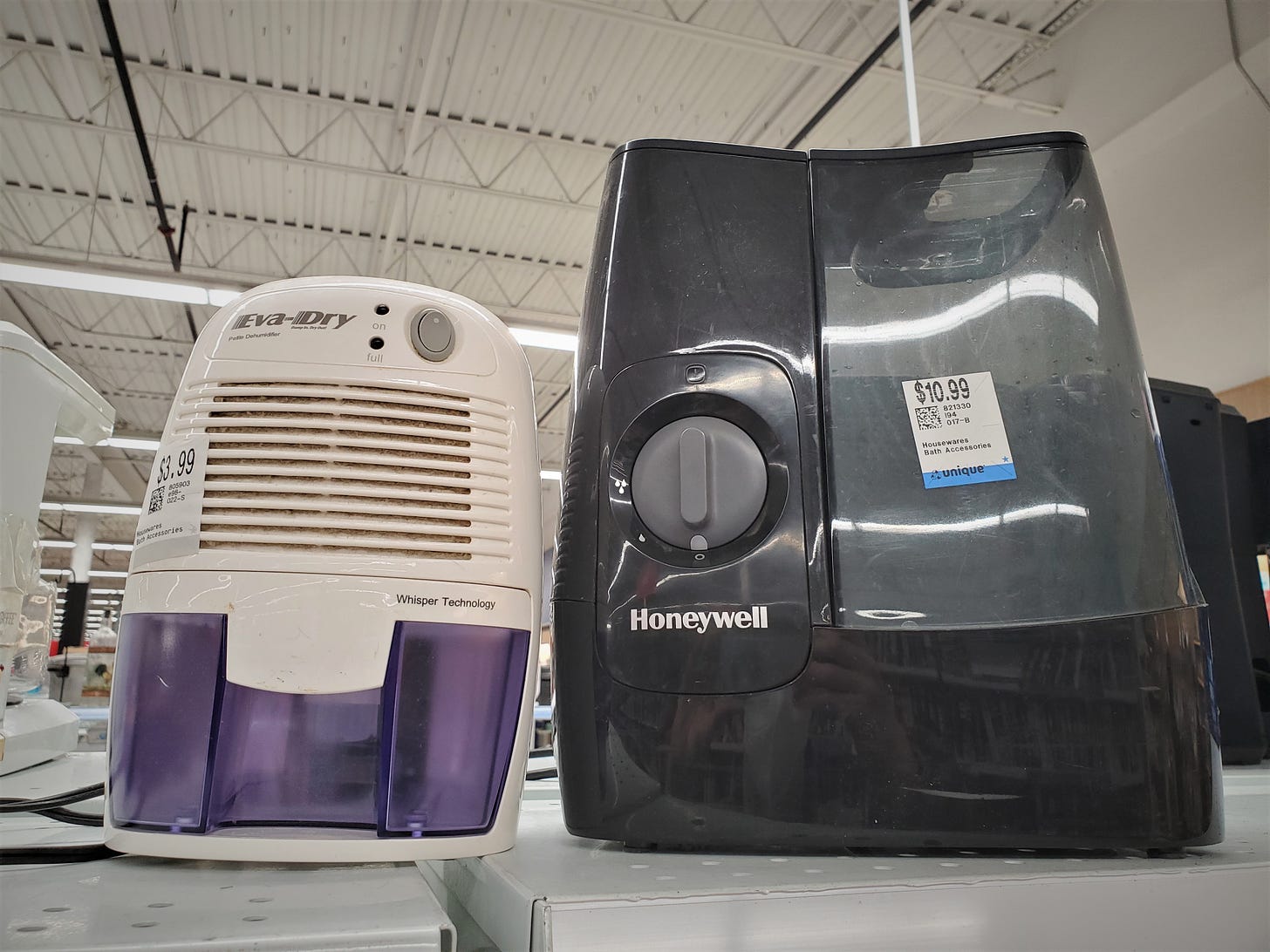A Repair Journey Through Low-Cost Manufacturing
A cheap device from Amazon is a window into southern China's industrial ecosystem
A couple of weeks ago, I posted this on Twitter:
Almost 30 people replied, most of them guessing an old tower computer, or something similar. That’s a good guess, because this is a computer fan. But if I had removed it from a computer, I wouldn’t have asked this question.
I won’t keep you waiting. This is the device I took it out of:
This may or may not strike you as interesting, but it’s fascinating to me. This is an inexpensive dehumidifier intended for use in a single room. It’s available under a number of brand names, or even unbranded, for about $30-$40 on eBay or Amazon. A number of similar ones are available on Alibaba.
This device was almost certainly designed and manufactured in southern China, in the industrial area around Shenzhen. This stuff is commonly viewed as low-cost junk. It is low-cost, but I have to say, a lot of it is not junk. In fact, this is a kind of ingenious example of low-cost engineering.
Get ready for a long backstory as to how I figured this out.
One day, the dehumidifier stopped working. Instead of powering on and starting to run, it was making a clicking sound, and the power light was flashing. I wasn’t hopeful about being able to fix it, but I opened it up—a skinny Phillips screwdriver did the job on a handful of screws—and I found that the power switch, fan, and other electronics all snapped into little sockets on a tiny mainboard:
This is pretty good design! Often these types of connections will be soldered, making it impossible to detach wires and fully open up the device. Connectors are seen as somewhat higher-quality than solder joints, so I was surprised to see this. I was able to snap out the connectors, and then spray them all with electronic cleaner. Perhaps I had a dirty switch. But no dice. With the unit opened up, however, I could see that the fan was trembling, as if it was trying to spin up. That was the source of the clicking noise.
So I pulled out the fan assembly—this is the core of the machine—and that’s when I found that this thing uses a computer fan! I found that by spinning the fan by hand, I was able to overcome whatever was going on, and it could spin up. I concluded that I needed a new fan, and since this was a smartly adapted, bog-standard off-the-shelf part, that would be easy.
It should have been easy. Computer fans come in a lot of different sizes. They also come with a few different connectors. This one uses a simple 2-pin connector (power and ground), while most modern computer fans have a third wire (speed control) and some have a fourth. 2-pin fans must be slightly cheaper, and less commonly used in actual computers, so they went into this device.
Here’s the other side of the assembly. It involves a heatsink, which may very well also be an off-the-shelf part from the computer trade. There are holes drilled in it with loose metal shards around the edges, so it looks like they’ve drilled the holes themselves rather than had a part custom-made.
But back to the fan. I hunted down a 2-pin fan with the right measurements on eBay, which shipped directly from China. Probably the same exact part!
When it arrived in two weeks, I was excited to get my dehumidifier running again. I snapped in the new fan, and…now the unit’s power light lit up quietly, and the fan did absolutely nothing.
I puzzled over it for awhile until I noticed that the black and red wires were in the opposite order on my new fan. In other words, the polarity was reversed, and computer fans are usually designed to do nothing when that happens. I had not realized that in addition to size and connector type, there was a third variable I had to account for!
So I headed off to Micro Center, a really cool computer and electronics superstore with a location in Fairfax that brings to mind the big-box computer stores of the 1990s. If anyone could take a glance at this broken fan that ended up in the guts of my dehumidifier from Shenzhen, it would be Micro Center.
Well. The fellow in the fans and cases department took a glance at the broken fan, and then asked with puzzlement, “What did you take that out of?” I told him, and his expression changed to understanding. “I see. Computers don’t really use those anymore. All we’d have is a three-pin. Maybe you could splice the wires?”
Splice the wires, or pull them out of the new fan’s connector and try jamming them back in, in reverse order, without breaking the connector or tearing the wires. Or going back to eBay and paying close attention to which wire entered which side of the connector.
On the way home from Micro Center, I stopped in a thrift store—in a former Circuit City, thematically enough—just to do some browsing. And what did I see on the shelf, but this:
Now it happens I had just replaced my old, broken humidifier with the exact model on the right. (Everything breaks at once.) So I left that. But for four bucks, the dehumidifier was a bargain. I figured the fan probably worked, even if the unit had some other issue. It even came with the power adapter. And it was cheaper than buying another eBay fan.
I got it home and plugged it in, and it started right up! But I still wanted to say I’d fixed the old one, so I snapped the fan out of the new one, and snapped it into the board of my old one. It didn’t matter that the fan was still physically inside the new unit—the modular nature of the design meant I could test the part before actually moving it over.
And—the working fan proceeded to tremble and click, while the power light flashed.
Now I was afraid my original unit had a board-level problem, and was basically junked. You can’t reasonably fix a tiny circuit board. But one last, silly test to hold onto hope. I snapped the fans back into their original units, and then I took the power adapter from the new unit and plugged it into the old one. The “broken” fan spun right up.
And there you go—I’d gone on a multi-day adventure involving eBay and several stores, and learned about the non-computer uses of computer fans, all because of a faulty little AC adapter!
Electronics can break in a lot of ways, and it’s often not intuitive what exactly is going on, let alone how to fix or replace the malfunctioning part. And at the price these kinds of things sell for, most people don’t bother.
Because nobody bothers, there’s a whole world of low-cost Chinese-made products that are mostly undocumented. For example, there are few if any YouTube videos tearing these things down or walking through how to fix them. The parts that have gone into them—off-the-shelf parts from very different original applications like this one, even reportedly used parts from the e-waste trade—have gone totally under the radar.
I wonder how many other non-computer devices these little fans have ended up in. I wonder how many other examples there are of basic, low-cost products designed around existing parts, creating cost savings without much loss in quality.
This might even affect the kinds of products that get made. For example, very few American companies, or any big name brands at all, make these portable/room-sized dehumidifiers. Perhaps their native approach would be to design them from the ground up, and perhaps they know that would yield a product that couldn’t be sold at the kind of price point you’d need to move them. A few dollars can make the difference. These Chinese manufacturers have apparently found a way around that, by asking not “how can we design X?,” but rather, “how can we assemble X?” As with modern-day cassette players, the southern Chinese industrial ecosystem may be the difference between this product existing and not existing.
Their competitiveness certainly has to do with support from the Chinese government, i.e. industrial policy, as well as lower labor costs. But I’d venture it also has to do with the whole industrial ecosystem China has built in its south; the creativity that arises out of large numbers of manufacturers and designers amassed in the same area together; and the keen entrepreneurial impulse to look at a computer fan and imagine a whole bunch of latent applications nobody ever expected.
Related Reading:
The Modular, Repairable “Big Blue”
Please consider upgrading to a paid subscription to help support this newsletter. You’ll get a weekend subscribers-only post, plus full access to the archive of over 200 posts and growing. And you’ll help ensure more material like this!










